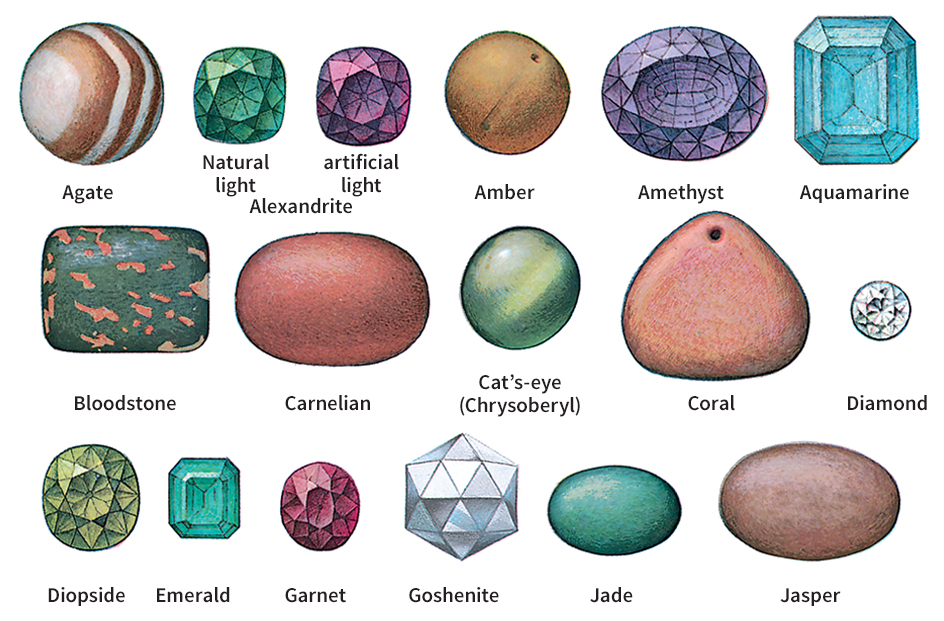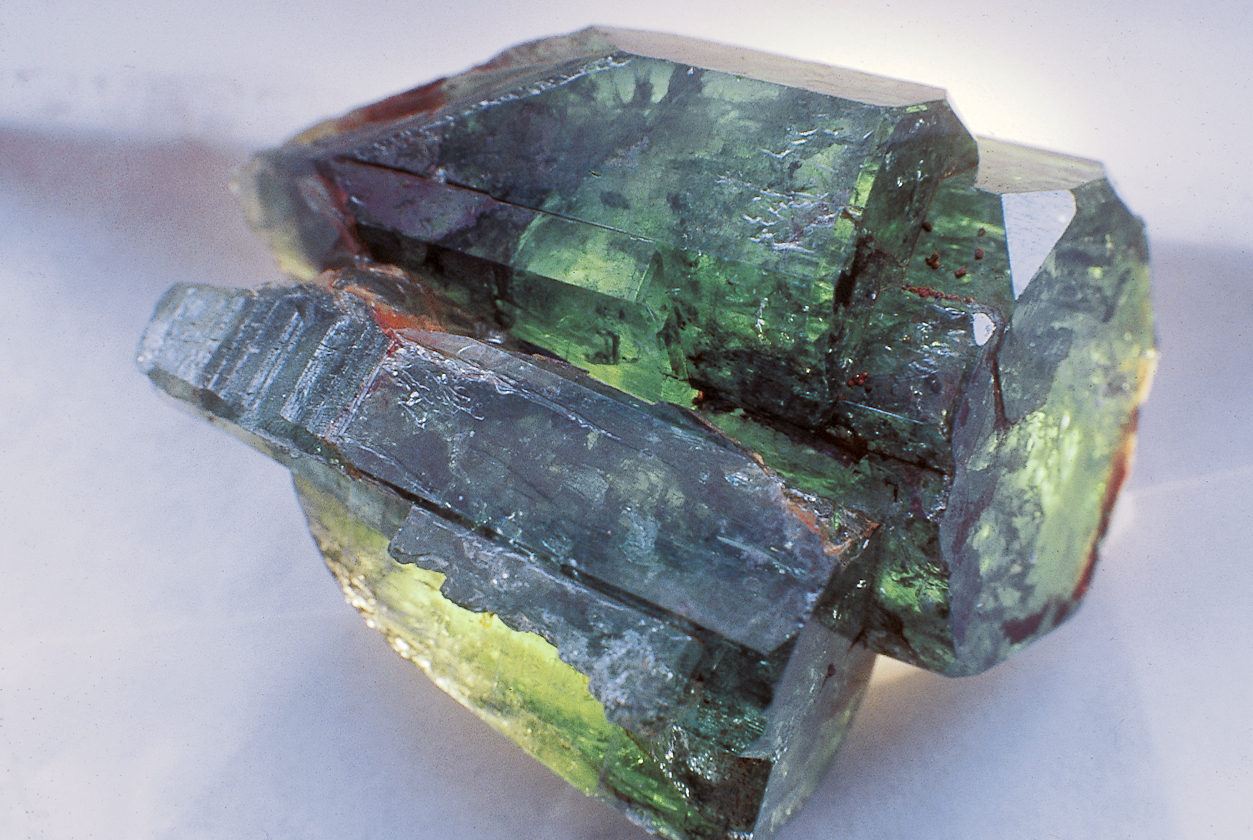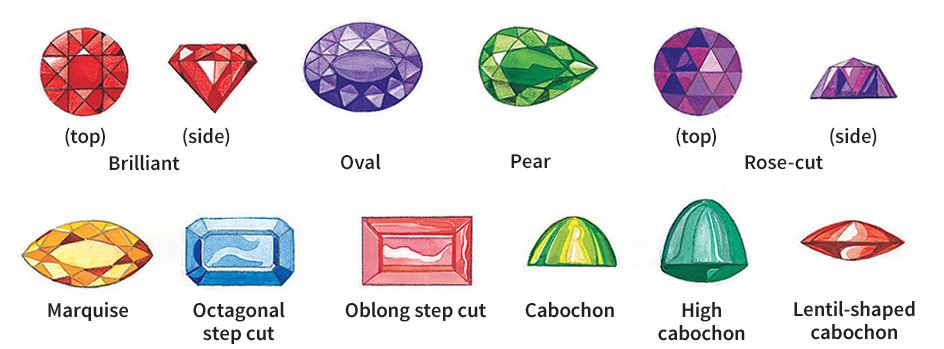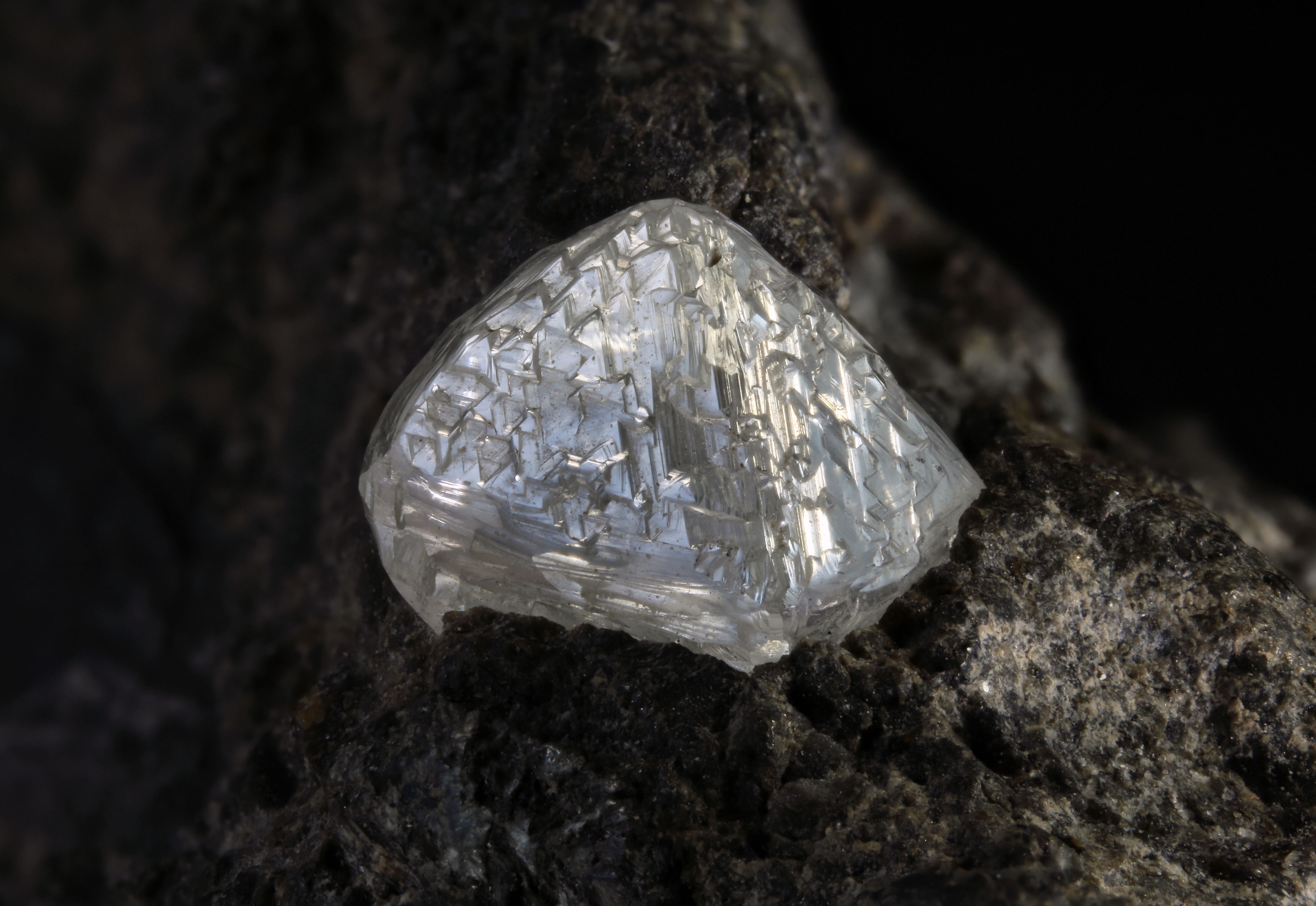Gem is a mineral or other material used in jewelry and other ornaments that is beautiful, durable, and rare. Gems include diamonds, emeralds, opals, and rubies, as well as laboratory-grown gems and other artificially created imitations. When mined, most natural gems have a rough surface and irregular shape. Skilled gem cutters then cut and polish them.
Most gems are minerals. However, some gems have organic origins. For example, pearls are formed in the shells of living oysters. Amber is a fossil resin from ancient pine trees. Coral consists of the skeletons of tiny sea animals. Jet is a fossil wood related to coal.

Many gems are beautiful, durable, rare, and valuable. But there are numerous exceptions. For example, some rare and beautiful minerals are too soft to be used in jewelry, and many artificial gems are beautiful and durable, but neither rare nor valuable.
Qualities of gem minerals
Gem minerals are natural materials made into gemstones. To identify such minerals, experts sometimes must use chemical tests or X rays. But gem minerals can usually be identified by such properties as (1) crystal shape, (2) color, (3) index of refraction, (4) cleavage, (5) hardness, and (6) specific gravity.
Crystal shape
varies from one type of gem mineral to another. But all the crystals of any one kind of gem mineral have the same type of symmetry (balanced arrangement of faces). For example, diamonds crystallize in the isometric system and, in most cases, form an octahedron (double pyramid). See Crystal.
Color
helps determine the beauty, value, and splendor of gems. But color is not an ideal property to use for identifying gems, because different kinds of gems may have similar colors. For example, the blues of some aquamarine and topaz look almost identical. In addition, a single gem mineral may occur in a wide range of colors. For instance, varieties of the mineral beryl include goshenite, which is colorless; morganite, which is pink; and emerald, which is green. In general, gem color results from one or more of the following factors: (1) chemical impurities in the mineral, (2) defects in the arrangement of atoms in the crystal, and (3) the behavior of light passing through or reflecting from the mineral.

Index of refraction
indicates the amount that a light ray bends as it passes out of one substance and into another. When light passes from air to a denser substance, such as a transparent gem, it slows down. If the light ray enters the gem at any angle except a right angle, the slowing down causes the light ray to bend at the point of entry. This bending is called refraction. The ratio of the speed of light in air to its speed in the gem is the gem’s index of refraction. The higher a mineral’s index of refraction—that is, the more it slows down light rays—the more brilliant the mineral can be as a gemstone.
When a ray of white light passes through some gems, it separates into rays of different colors. This is called dispersion. The degree of dispersion varies with each type of gem. In most diamonds, dispersion is distinct. As a result, when light passes through a properly cut diamond, the gem reflects bright flashes of the colors of the spectrum.
Cleavage
is the tendency of some minerals to split in definite directions, producing a flat surface. Minerals may have one or more cleavage directions. For example, topaz has one prominent cleavage direction, and diamond has four. Cleavage differs from fracture, which produces uneven gem surfaces. Some minerals have a characteristic fracture.
Hardness
is an important quality of gem minerals. Few stones can serve as gems unless they can wear for a long time. Mineralogists use the Mohs scale to indicate the relative hardness of minerals. The scale numbers degrees of hardness from 1 to 10. Minerals rated 7 or more wear well as gems. A mineral rated 7, such as quartz, cannot be scratched by a steel knife or by glass. Diamond, the hardest substance in nature, is rated 10. It can scratch any other mineral.
Specific gravity
is the ratio of the weight of a given volume of a substance to the weight of an equal volume of pure water. Each type of gem has a certain specific gravity. Amber has a specific gravity of 1.08, about the same as saltwater. Diamond has a specific gravity of 3.52. Thus, a given volume of diamond weighs about 31/2 times as much as an equal volume of pure water.
Sources of gems
Gem minerals are found in a variety of geological environments. Some gems, such as peridot and some diamond, occur in igneous rocks, which are formed by the cooling of hot, melted material. Coarsely grained igneous rocks called pegmatites produce most of the world’s beryl, spodumene, topaz, and tourmaline. Some rubies and sapphires are found in metamorphic rocks, which form under great heat and pressure. Jade is a type of metamorphic rock. Sediments, such as sand and gravel, may contain such gems as spinel and moonstone and some diamonds, rubies, and sapphires. These sedimentary rocks are formed from sand and gravel deposited by water, wind, and ice. Opal and turquoise formed in sedimentary rocks are a result of mineral-rich water seeping through the rock.
Diamonds are mined mainly in Australia, central and southern Africa, and Russia. The best rubies come from Myanmar, and the best sapphires from Myanmar, Thailand, and Kashmir (a region controlled partly by India, partly by Pakistan, and partly by China). Brazil produces most of the world’s aquamarines. Fine emeralds are found in Colombia. Topaz is mined extensively in Brazil. Fine opal comes chiefly from Australia. Turquoise is in the southwestern United States and in Iran. Pearls are harvested from the Persian Gulf and the gulf between India and Sri Lanka.
Cutting and polishing
Hardness, transparency, and index of refraction determine the way a gem is cut. There are two main styles of cut gems: (1) faceted gems, which have many tiny polished sides called facets, and (2) cabochons << KAB uh shawnz >>, which are rounded, polished stones. A faceted style called the round brilliant cut has 58 facets. It is commonly used for diamonds. Such gems as agate, chrysoprase, jasper, and moonstone are often cut in the cabochon style. Lapidaries (gem cutters) cut most gems by grinding away material until the desired shape is reached.

To cut and polish a gemstone, lapidaries must use a material that is as hard as, or harder than, the gemstone itself. For example, sapphire and ruby are cut with diamond powder or with Carborundum powder, both of which are harder than sapphire and ruby. Carborundum is a trade name for silicon carbide. A diamond can be ground and polished only by using diamond powder.
Lapidaries cut most transparent gems into faceted gemstones. They use the stone’s refractive index to determine the proper angle between the top set of facets and the bottom set. If the stone is well proportioned, nearly all the light that enters the stone through the top facets is reflected back up from the bottom facets, giving the stone maximum brilliance when viewed from the top.
Value of gems
A gem’s value is determined by many factors, including brilliance, color, rarity, weight, and cut. Diamonds are among the most prized gems because of their hardness and brilliance. Fine emeralds, rubies, opals, and other gems, however, can be equally or more valuable. Pearls are graded by size, color, and perfection of shape. In general, they should be white or lightly tinted, and round. Opals are valued by the intensity of their color flashes and by their background color. Black opals are the most valuable. They emit bright color flashes from a black, gray, or blue background.
Some famous gems
The most celebrated diamond in the world is probably the Koh-i-noor. Found in India hundreds of years ago, it was presented to Queen Victoria of the United Kingdom in 1850 by the British East India Company. The Cullinan diamond, found in South Africa, was the largest diamond ever discovered. It weighed more than 3,100 carats. One carat equals 200 milligrams (0.007 ounce). One of the largest cut diamonds in the world came from the Cullinan. It is the 530-carat Star of Africa, set in the royal Scepter with Cross of the British crown jewels. One of the most beautiful pearls ever found is La Pellegrina. Discovered in India, it weighs about 36 carats.
Imitation and synthetic gems
The beauty and rarity of natural gems has caused a constant demand for them. But their costliness has prevented many people from owning them. Thus, synthetic and imitation gems have become the foundation of a major industry. The basis of some inexpensive imitations is a soft glass called paste. Some high-quality imitation diamonds consist of a synthetic compound called cubic zirconia.

Jewelers also sell assembled stones called doublets or triplets. These stones most often consist of two or three sections fused together or held together by a colorless cement. The most common are opal triplets, which are made of a thin slice of opal sandwiched between a base and a polished quartz or glass top.
Since about 1900, excellent synthetic gems have been produced in laboratories. These gems have the same chemical and physical properties as natural gems. Synthetic rubies and sapphires have been made by melting aluminum oxide in a flame produced by hydrogen and oxygen gases. Other gems created synthetically include diamonds, emeralds, and spinels.
